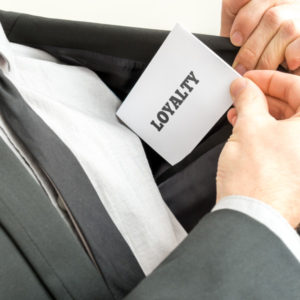What makes a customer loyal? Is it the quality of your products? Competitive pricing? Is it customer service?
This is a common question that many organizations struggle with – and unfortunately, there is no obvious answer or straightforward approach that will make your customers loyal to you and you alone. However, you can build loyalty over time by developing an emotional connection with your customers.
Shifting Approaches to Create an Emotional Connection
In my experience as a leadership change consultant, if you want to improve customer loyalty, you need to move beyond behavioural and transactional loyalty and create an emotional connection with your customers. To drive satisfaction and loyalty and win over your customers, you must address their needs from both an emotional and rational perspective.
Emotional connections have the biggest impact on your ability to develop a loyal customer base. For this reason, today’s organizations need to shift their approach and develop a higher level of emotional competency.
How to Determine Drivers of Customer Loyalty to Create Satisfied and Loyal Customers
Emotional loyalty has the biggest impact on your customer’s behaviours. Customers who are emotionally invested in your company are more willing to choose you even if other comparable alternatives are available. Strong emotional connections will determine the strength of your customer relationships and influence the desired behaviours you want your customers to exhibit – passion, loyalty and advocacy.
As I have discussed previously in 4 Tips to Turn Satisfied Customers into Loyal Customers,
“Every single interaction with a customer affects your business. Whether it is positive, neutral or negative, the goal is to build a loyal relationship so they return again and again to spend their money with your business — and tell their friends. This leads to greater profitability. The loyal customer is the
ideal customer, and all team members should be focused on building loyalty at every opportunity.”
Here are 4 steps to determine key emotional drivers of customer loyalty:
- Determine your most profitable customers: Focus on your most profitable target customers and determine how they perceive you as a brand and the value you offer to them.
- Understand their expectations and value drivers: Determine what your customers’ value most. What attributes attract them to your brand? What expectation do they have when doing business with you? Why do they come back, and why do they refer your business to others? Based on this information, develop a core set of value drivers.
- Create an expectation and experience map: As expressed in Creating a Customer Experience that Drives Results, “Everyone remembers great customer service experiences, and this is often the reason why you go back to a company or use a specific brand. Investing in creating an ideal customer experience for your customers that meets their needs on an emotional level will help you improve overall satisfaction and drive the results you want to achieve.” Create an experience map to determine what is important to your customers at each touch point.
- Activate the Value Drivers: Start to intentionally build in the insight on the value drivers you discovered into your experience. Priority should be on elements that have low cost/high value perception or that provide you the opportunity to differentiate yourself from the competition. It’s not enough to understand the value drivers, but you must intentionally embed them into your processes and measure against them — or they get left behind.
Your team will provide you with some value insight about your customers. Talk with team members who regularly interact with your customers. They will be able to tell you about the things your customers like and don’t like. This information will help you determine areas that need to change to improve your customer service, relationship building, and ability to connect with customers on an emotional level.
Creating a loyal customer base that is emotionally invested in your business is about tapping into a customer’s emotional and logical senses. It is intangibles like creating strong customer experiences and connecting with customers on a deeper level that leads to real change, a competitive advantage and optimizing relationships that improve desired business results.
Click here for more information about this topic or to book Bill for a leadership speaking engagement, or visit us online at www.BillHogg.ca where you can sign up to receive an article like this each month.



